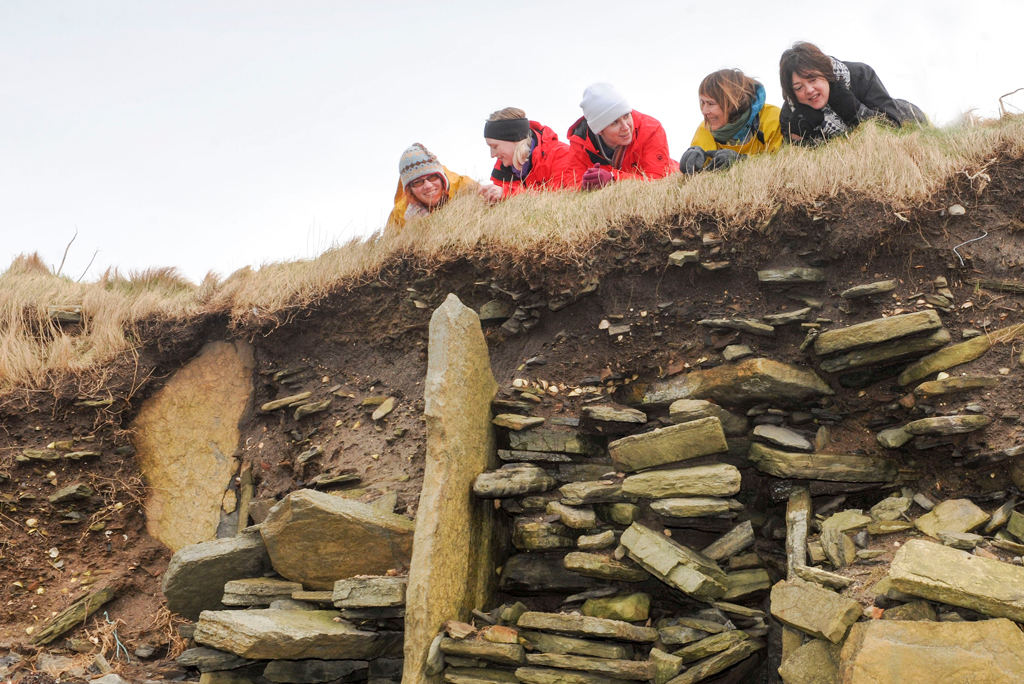

Within the bluestones, which are arranged in a horseshoe, is another set of free-standing vertical sarsen stones topped with a lintel. Inside stands a smaller ring of bluestones. At 13-foot-tall and 7-foot-wide, the outermost ring contains vertical sarsen stones-large sandstone rocks native to Southern England-weighing around 25 tons and topped with horizontal stones. While Stonehenge’s purpose remains unclear, the monument is aligned toward sunrise at the summer and winter solstices. Most scientists agree that it was built in stages by Neolithic and Bronze Age people who constructed them with simple tools and limited technology. Other theories posit that they were erected by invading Danish forces or that they are the ruins of a Roman temple. According to folklore, the site was created by the Arthurian wizard Merlin, who magically transported the stones from Ireland, where they had been assembled by giants. One of numerous “henges” in the United Kingdom, the archaeological site of Stonehenge, consisting of massive prehistoric stones standing vertically and arranged in an outer ring and an inner horseshoe with smaller stones interspersed, still survives at more than 5,000 years old.

These places-many of them still accessible to the public today-continue to be of significant historical and cultural importance.īelow is a brief overview of the 24 most notable archaeological sites around the world. While some of these sites are the only record of the civilizations that created them, others have been continuously occupied, such as the present-day city of Jerusalem, which was built on top of its ancient structures. This list considers places-some of which are included among the Seven Wonders of the World, and others among UNESCO’s list of protected World Heritage sites-built by ancient Romans, Sumerians, Egyptians, Indigenous peoples of the Americas, and Chinese. All offer clues to their builders’ aesthetics and values. Many foreshadow art and architecture as we know them today. By studying these sites, scholars are often able to trace their histories, as well as their place in the historical continuum. Imbued with the mores of the cultures that created them, archaeological sites shed light on past civilizations, preserving their societal structures, religious beliefs, and modes of living.


 0 kommentar(er)
0 kommentar(er)
